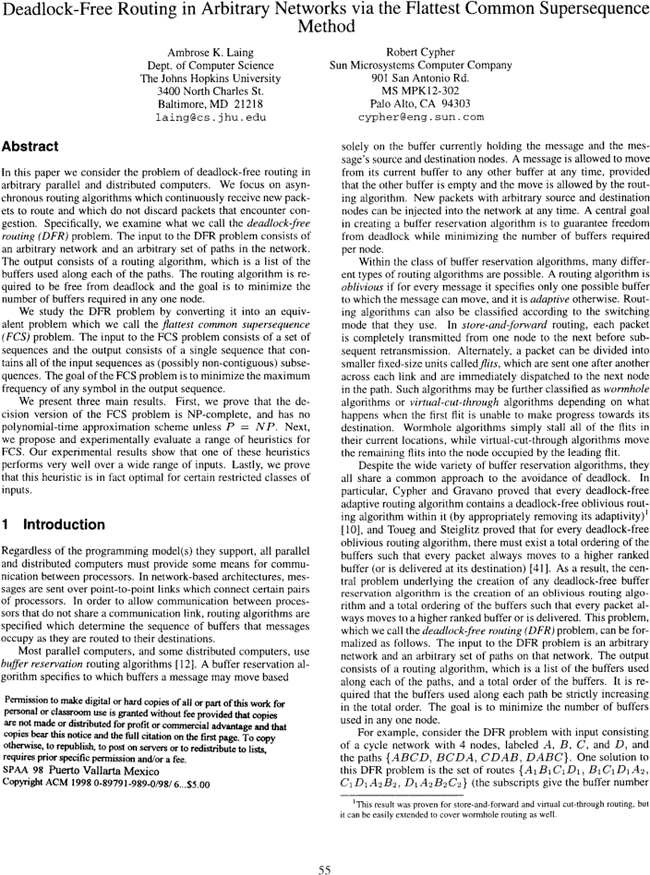Deadlock-free routing in arbitrary networks via the flattest common supersequence method

References
Index Terms
- Deadlock-free routing in arbitrary networks via the flattest common supersequence method
Recommendations
Minimal, deadlock-free routing in hypercubic and arbitrary networks
SPDP '95: Proceedings of the 7th IEEE Symposium on Parallel and Distributeed ProcessingIn this paper we consider the problem of creating minimal, deadlock-free routing algorithms, where a routing algorithm is said to be minimal if it uses only shortest paths. In particular we examine the possibility of creating scalable algorithms that ...
Shortest-Path Routing in Arbitrary Networks
We introduce an on-line protocol which routes any set ofNpackets along shortest paths with congestionCand dilationDthrough an arbitrary network inO(C+D+logN) steps, with high probability. This time bound is optimal up to the additive logN, and it has ...
Comments
Information & Contributors
Information
Published In

Sponsors
Publisher
Association for Computing Machinery
New York, NY, United States
Publication History
Check for updates
Qualifiers
- Article
Conference
Acceptance Rates
Contributors
Other Metrics
Bibliometrics & Citations
Bibliometrics
Article Metrics
- 0Total Citations
- 403Total Downloads
- Downloads (Last 12 months)19
- Downloads (Last 6 weeks)1
Other Metrics
Citations
View Options
Get Access
Login options
Check if you have access through your login credentials or your institution to get full access on this article.
Sign in